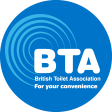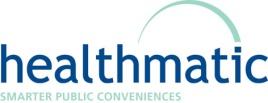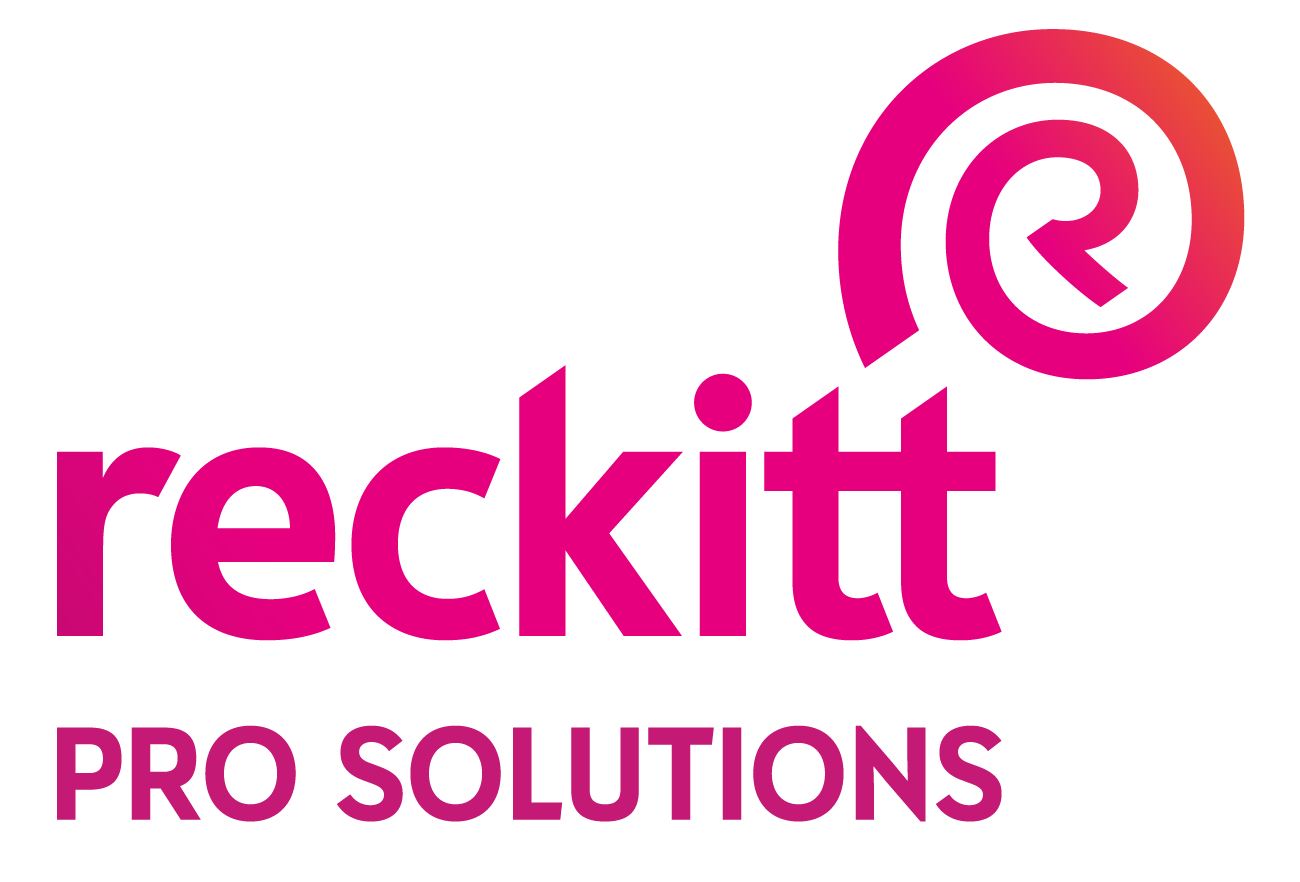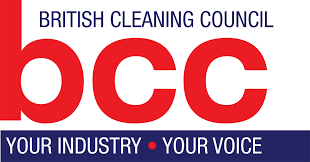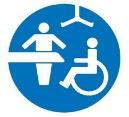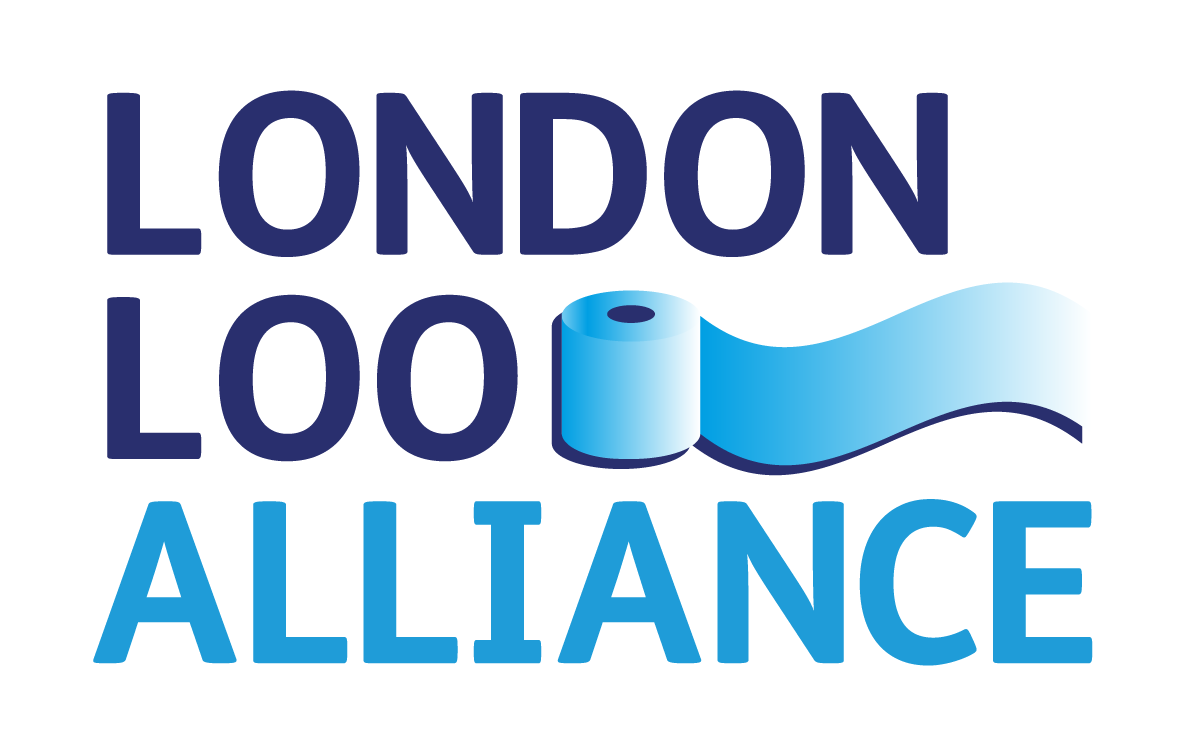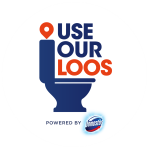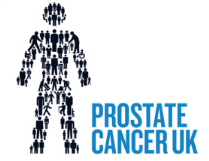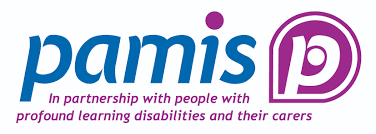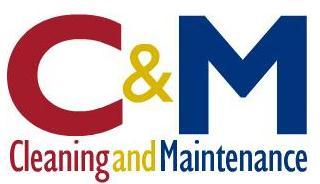Monthly Archives: July 2020
CoronaVirus: a report on Warm Air Dryers & Paper Towels
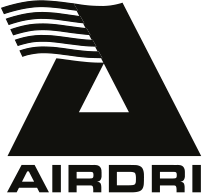
Airdri: paper – Microbiologist’s report
As an experienced microbiologist, I have been asked if I feel safe using a public washroom in the current coronavirus pandemic and how the virus could be transmitted in a washroom? The virus responsible for the pandemic has been named ‘severe acute respiratory syndrome coronavirus 2’ (or SARS-CoV-2) and this causes the disease COVID-19.
The second question is easy to answer: Current informed opinion shows that SARS-CoV-2 is spread by droplet transmission, and also by contacting contaminated surfaces and then touching your face. UK Government, NHS, CDC and WHO sources all emphasize social distancing and the need for adequate handwashing as well as hand sanitation to prevent transmission. The risks of contracting COVID-19 should be no greater in a washroom than in any other communal space.
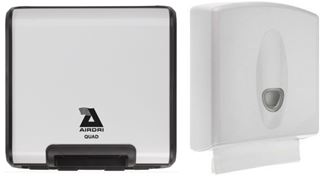
If washroom users have no obvious symptoms of COVID-19 there should be little risk of infection, however there is some debate about the release of SARS-CoV-2 by people before they show symptoms, so there is a possibility of being exposed to contaminated air and surfaces[1]. However the risks are probably greater in the general workplace where coughing and sneezing (and even speaking[2]) can release airborne SARS-CoV-2 which can survive up to 15 minutes in droplets and aerosols in air [3]. With droplet transmission respiratory droplets are generally large enough (> 100 microns in diameter) to fall to the floor rapidly and within 2 meters of the person who is coughing or sneezing.[4] These droplets should adhere to surfaces and the floor as they are comprised of mucus – reducing the risk of transmission. Droplet transmission of coronaviruses by washroom activities is also unlikely as the air is constantly changed, typically 8 – 12 times per hour,[5,6] which will remove droplets as will ‘natural’ ventilation due to opening and closing doors. Many smaller washrooms are also fitted with ‘air purifiers’ to control odours and remove microbial contaminants. Previous (pre-pandemic) studies on the spread of droplets containing faecal bacteria from flushing toilets, operating hand dryers and handwashing have detected faecal bacteria in the air and on surfaces, with Escherichia coli, Streptococcus and Salmonella bacteria being found in public washrooms, and pathogenic Clostridium difficile and MRSA detected in hospital washrooms and toilets.[7,8,9] SARS–CoV-19 has been reported in faeces[10] however there are no reports of transmission via this route.
One notable feature of this research has been the long-standing debate about the relative advantages (or otherwise) of hand dryers over paper towels and their role in the transmission of pathogens. Much of the research is related to hospital usage of hand dryers, and it is generally accepted that they should not be used in clinical areas due to the noise rather than any published epidemiological evidence to show that they are unsafe.
This debate is fueled by the sales of paper towels and hand dryers in the washroom sector: market research indicates that sales of multi-fold paper towels will reach $4bn this year while sales of hand dryers will reach $856m, having grown 12% every year since 2014. The paper towel manufacturers, supported by some biased scientific literature and scaremongering in the public press, report that hand dryers are unhygienic and contribute to the spread of pathogenic bacteria and viruses in the washroom.
In response, the hand dryer industry reports that both paper towels and their dispensers can harbour significant amounts of pathogenic bacteria and viruses, that used towels cannot be recycled and they have a negative environmental impact. [11,12] Potentially pathogenic microbes are spread in the washroom by the users not washing and drying their hands correctly and via the HVAC system supplying contaminated air from other rooms in the building.[13] In a small (50 m3) washroom, a single operation of a typical hand dryer would only disturb 2-3% of the volume of air in a single operation and is unlikely to contribute to the spread of microbes.
The reality is that there is no real difference between paper towels and hand dryers when it comes to cleanliness.[11]
In the light of available information about SARS-CoV-2 and COVID-19 there are two key facts which emerge and warrant attention:
The first, particularly in the present pandemic, is the importance of hand-washing. Most of the hygiene problems arising in washrooms to date have been due to inadequate hand washing. Pre-pandemic observations have shown that nearly 95% of adults did not wash long enough to thoroughly clean bacteria and viruses from their hands.[14]
Furthermore, one UK study reported that:
99% of people visiting a public washroom said they had washed their hands after going to the toilet however, recording devices showed that only 32 percent of men and 64 percent of women actually had.[14] Washing is the key to the removal of bacteria and viruses, and organizations such as the WHO, CDC and DHSS detail the correct way to do it. [15,16,17]
The second is the importance of drying hands properly. In several studies people spent, on average, just 22.5 seconds drying their hands and 45% of washroom users wiped their hands on their clothing to finish drying.[18] An observational study in 2006 timed 5000 hand drying events at a motorway service station and noted that men used the warm air hand dryers for an average of 20 seconds, whilst women used them for just 16 seconds. These reported mean drying times are substantially below 30 seconds, so it can only be concluded that most users of warm air hand dryers do not achieve full drying of their hands. [19]
The World Health Organization has stated that:
“To protect yourself against the new coronavirus, you should frequently clean your hands with an alcohol-based hand rub or wash them with soap and water. Once your hands are cleaned, you should dry them thoroughly by using paper towels or a warm air hand dryer.” [20]
The key message for hand hygiene in washrooms is:
1. ensure the hands are correctly washed,
2. ensure hands are thoroughly dried (10 seconds of drying with either paper towels or jet air dryers; or up to 40 seconds using a warm air hand dryer [21]),
3. do not touch any surfaces after drying hands, and if you do
4. use a hand sanitizer when outside the washroom.
In answer to my first question – “would I feel safe using a public washroom in the current pandemic?” is “yes, it is now probably safer than I did in pre-pandemic days. If people wash their hands correctly, and then dry using either hand towels or hand dryers according to WHO guidelines transient micro-organisms derived from contact will be washed off (soap has been shown to denature SARS-CoV-2),: and any aerosol generated from clean hands by hand dryers will not transmit pathogenic bacteria or viruses into the washroom”.
REFERENCE DOCUMENTS AND WEBSITES
[1] https://www.medrxiv.org/content/10.1101/2020.03.23.20039446v2
[2] https://medicalxpress.com/news/2020-04-important-speech-transmitting-coronavirus.html
[3] https://www.nejm.org/doi/pdf/10.1056/NEJMc2004973
[4] https://onlinelibrary.wiley.com/doi/full/10.1111/j.1600-0668.2009.00626.x
[5] https://www.hse.gov.uk/pUbns/priced/l24.pdf
[6] http://www.solutionsforair.com/resources/rulesofthumb/restroom.aspx
[7] https://www.initial.com/assets/content/files/journey-of-the-germ-white-paper.pdf
[9] https://microbewiki.kenyon.edu/index.php/Microbiology_of_Hospital_Washrooms
[10] https://www.livescience.com/coronavirus-covid-19-spread-through-feces.html?
[11] https://www.theguardian.com/society/2019/apr/25/hand-dryers-paper-towels-hygiene-dyson-airblade
[12]https://www.intelligenthanddryers.com/blog/hand-dryers-are-they-hygienic
[13] https://www.ncbi.nlm.nih.gov/pmc/articles/PMC5881072/
[14]https://www.transplumb.com/news-archive/news-2017/16-03-17-srticle-proper-handwashing-and-drying
[15] https://www.who.int/gpsc/clean_hands_protection/en/
[16] https://www.cdc.gov/handwashing/index.html
[17]https://www.nhs.uk/live-well/healthy-body/best-way-to-wash-your-hands/
[18] http://info.debgroup.com/blog/bid/297155/Paper-Towels-or-Hot-Air-Dryers-Which-is-Better-Why
[19] https://sfamjournals.onlinelibrary.wiley.com/doi/full/10.1111/j.1365-2672.2010.04838.x
[21] http://www.nhs.uk/news/2013/06June/Pages/Paper-towels-may-be-more-hygienic-than-hand-dryers.aspx
Dr. David L. Webber 10th April 2020
Related products: NEW Air Purification Units
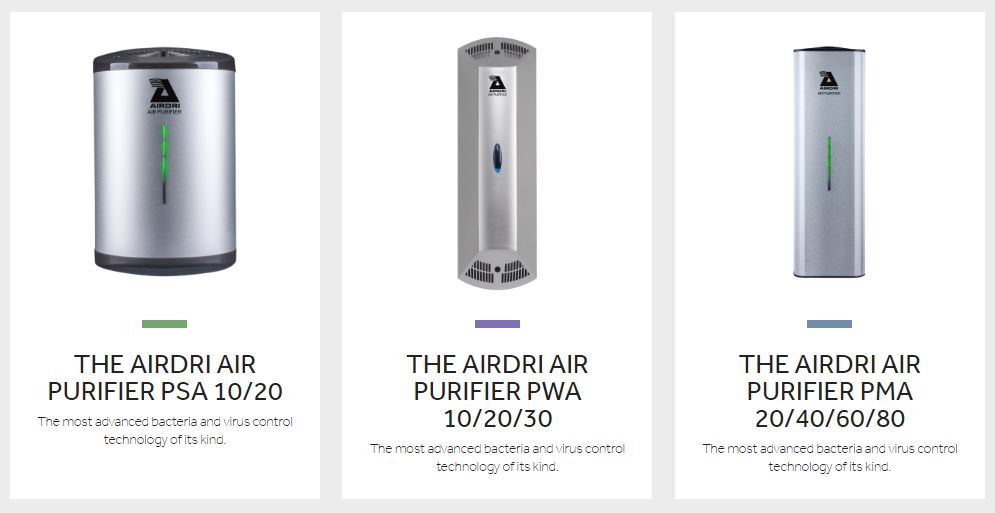
Odours are created by bacteria, viruses, mould, fungi and volatile organic compounds in the air and on surfaces. It is these odours that generate the perception of poor washroom hygiene. Tests carried out at Porton Down have proved that the Airdri Air Purifier kills 98.11% of all airborne and surface bacteria and viruses.
By killing harmful airborne and surface viruses and bacteria, the Airdri Thermal U/V Washroom Air Purifier eliminates odours from the washroom reassuring users that the washroom is clean. Regular cleaning and the use of disinfectants and masking agents cannot control the spread of micro-organisms however the Air Purifier can provide 24/7 infection and odour control by sanitising the air and all exposed surfaces.
- Completely silent
- Eliminates odours and mould
- Improves air quality
- Suitable for areas of continuous occupation
- Ideal for care homes, dental surgeries, waiting rooms, hairdressing salons, café and other hospitality uses
Contact: Airdri Ltd,
Technology House, Oakfield Estate,
Eynsham, Oxford, Oxfordshire, OX29 4AQ, UK
Telephone: +44 (0)1865 882330
Fax: +44 (0)1865 881647
Email: sales@airdri.com Website: www.airdri.com
Disinfecting premises using fog, mist, vapour or ultraviolet (UV) systems during the coronavirus outbreak

During the coronavirus (COVID-19) outbreak, fog, mist, vapour or UV treatments may be suitable options to help control the spread of the virus, by cleaning and disinfecting a larger space or room.
Any use of these treatments for these purposes should form part of your COVID-19 risk assessment. Users must be competent and properly trained.
Select the correct treatment
If you choose to use fog, mist, vapour or UV treatments as a way of cleaning and disinfecting surfaces, discuss your requirements with your manufacturers/suppliers (this may include fumigators), to help you decide if a product/system meets your needs. The treatment you use will depend on:
- the size of the area to be treated, its shape and how easily it can be sealed off if delivering an airborne product
- whether there are hard or soft surfaces – soft furnishings may act as a ‘sink’ for the airborne chemicals and emit them for some time after treatment (it may be possible to remove items such as sofas before treatment)
- the type of
business you have – some areas may be better suited to UV surface
treatments than airborne chemicals or vice-versa
Fog, mist, vapour method
If using the fog, mist, vapour method you will need to ensure the correct concentration of the active chemical is used, this means there is enough for it to work properly, but not so much as to leave a residue which may remain at unsafe levels for some time after treatment ends. There are different types of source disinfectants that can be applied as a fog, mist or vapour treatment. Some are liquid disinfectants used to create a fog, mist or vapour, such as hydrogen peroxide, others are generated from gases, for example ozone from air. Seek advice on what is appropriate to the environment that requires treatment.
UV method
An advantage of UV over disinfectants applied as a fog, mist or vapour is that no chemical residue is left behind. Rooms with complex configurations/interior designs may not be suitable for UV treatments due to the limitations of shadowing effects, unless multiple systems can be deployed. Similarly, very small spaces, such as small sanitary areas, may not be suitable for treatment via UV carousel as they need to be a minimum distance from walls etc to be deployed safely. Some disinfectant technologies are scalable so are typically more flexible in this respect.
Avoiding harm
Disinfectants applied as a fog, mist or vapour may reach harmful levels during delivery and UV systems may cause eye/skin damage if people enter an area undergoing treatment. Discuss with suppliers what safety features they can provide to prevent inadvertent access to a room during treatment. For example, safety sensors, simply locking rooms during treatment if feasible, or safety signage as part of a safe system of work.
Do not spray people with disinfectants
Spraying of individuals with disinfectants (such as in a tunnel, cabinet, or chamber) is not recommended under any circumstances. This practice could be physically and psychologically harmful and would not reduce an infected person’s ability to spread the virus through droplets or contact. Even if someone who is infected with COVID-19 goes through a disinfection tunnel or chamber, as soon as they start speaking, coughing or sneezing they can still spread the virus.
Do not disinfect large outdoor spaces
In outdoor spaces, large-scale spraying or disinfecting in areas such as streets or open marketplaces for the COVID-19 virus or other pathogens is not recommended. Streets and pavements are not considered as routes of infection for COVID-19. Spraying disinfectants, even outdoors, can be dangerous to people’s health and cause eye, respiratory or skin irritation or damage.
Supply and manufacture of disinfectants
The disinfectant applied as a fog, mist or vapour treatment must comply with the Biocidal Products Regulations (BPR). This includes the generation of ozone or free radicals. Please note the use of UV to disinfect is not covered by the BPR. Under BPR it is the disinfectant, or the chemical used to generate the disinfectant, added to the machine, that is the biocidal product. Please note that the machine itself is not covered by BPR. Suppliers of fog, mist or vapour units/machines should ensure that any disinfectant products they supply or recommend using with the unit/machine comply with BPR.
HSE has published separate guidance on the regulatory requirements for surface disinfectant products used, manufactured and supplied during the outbreak, which applies to disinfectant products applied via fog/mist/vapour units/machines.
Manufacturers of disinfectant products are responsible for ensuring that their products are suitably effective, including meeting any necessary testing standards. They are also responsible for providing information and instructions for the user on the product label.
The law on chemicals
Ensure that you follow the manufacturer’s instructions to ensure you are using the product safely and effectively. Where units/machines are used in a workplace, under the Control of Substances Hazardous to Health Regulations (COSHH) employers must ensure substances which may be harmful to people’s health from their work activities are identified and assessed; and processes are put in place to eliminate or control risks.
COSHH also requires employers to provide information, instruction and training for all their employees who use hazardous substances such as disinfectants in their work, including the appropriate precautions and actions employees must take to safeguard both themselves and others in the workplace.
Sealing off rooms
Rooms treated by UV or disinfectants applied as fog, mist or vapour should be empty and sealed off to avoid risk of human exposure to the potentially harmful treatments. Disinfectants may reach harmful levels during delivery and UV systems may cause eye/skin damage if people enter an area undergoing treatment. You may also consider safety sensors that can shut off UV systems if a room is inadvertently entered during treatment.
Rooms that are very difficult to seal may not be suitable for delivering airborne chemicals.
Social distancing and making your workplace COVID-secure

Social distancing means keeping people apart to help reduce the spread of coronavirus.
Where possible you should keep people 2m apart. If this is not viable, keeping 1m apart with risk mitigation is acceptable.
In the UK some rules such as social distancing may be different in each of the devolved nations. However, HSE regulates in all of these countries. You should check the public health guidance for the country you are in:
You must ensure that workers and other people visiting your workplace understand and comply with the measures you put in place.
Social distancing should form part of your business’s risk assessment and is one of the steps needed to make your workplace COVID-secure.
The gov.uk guides on working safely during coronavirus (COVID-19) explain the control measures that different types of business should consider. These cover construction, factories, offices, vehicle use and other types of work. The guides apply to workplaces in England.
The following guidance sets out the main control measures and additional measures where social distancing is not possible:
- Common areas (includes break areas, bathrooms, toilets, meeting rooms and accommodation)
- Workstations
- Arriving and leaving work
- Movement around buildings and worksites
- Where 2m social distancing is not possible
- Using vehicles
- Emergencies, security and other incidents
Common areas (includes break areas, bathrooms, toilets, meeting rooms and accommodation)
Common areas are used by many people. The potential for spread of coronavirus is considered to be higher in these areas if proper controls are not in place.
Identify and review the common areas within your workplace including:
- restrooms
- kitchens
- tea points
- changing facilities
- lifts
- meeting rooms
- smoking areas
- canteens
- toilets
- showers
- reception areas
- accommodation
Also consider pinch points in your premises such as narrow corridors, staircases, doorways and storage areas.
You may need to put in place a combination of control measures to keep people safe.
General control measures
Consider putting the following control measures in place for common areas:
- Limit the number of people at any one time using any areas that may become congested.
- Use floor markings to maintain social distancing.
- Keep surfaces clear so that cleaning can be carried out more effectively.
- Identify objects that may be touched more frequently, such as kettles, cooking equipment, phones, computers or tables and make sure that they are frequently cleaned.
- Try to maximise ventilation.
- Make sure that your workforce is clear on the rules when using common areas.
- The areas should be regularly cleaned in line with your cleaning plan.
- Minimise contact between people, using barriers or screens.
- Provide hand-washing facilities or hand sanitiser near to frequently used areas.
- Display signs reminding people to socially distance, wash hands and not touch their faces.
- Work with landlords and other tenants in multi-tenant sites or buildings to ensure consistency across areas such as receptions and staircases.
Guidance on cleaning, hygiene and hand sanitiser.
Break areas
Employers must make sure all workers, including those visiting your premises for work, have somewhere to rest and eat and should also provide facilities to heat food or water for hot drinks. Find out more about having the right workplace facilities.
Consider these control measures:
- Ensure that workers understand the need to maintain social distancing and good hand hygiene before entering any areas where food is consumed.
- If workers need to leave the site at break times remind them to maintain social distancing while off-site.
- If canteens are used, consider if food, cutlery etc can be delivered to tables. Where canteens need to serve food reconfigure seating and tables to maintain spacing and reduce face-to-face interactions. Mark the floor in case furniture is accidentally moved.
- Stagger or extend break times to limit the numbers of people using the facilities.
- Create additional break areas where required such as in unused rooms. It may be possible to create outside break areas where it is safe to do so.
Bathrooms, toilets and washbasins (welfare facilities)
You have a legal duty to provide adequate toilet and washing facilities that are easy and safe to access. This applies to any workers (including those not employed or contracted to you), and visiting workers who are not normally on your premises. The legal responsibility to provide access to these facilities lies with whoever controls the premises.
Refusing access for any reason, including as an infection control measure, is against the law. It is vital that people can wash their hands regularly, so not allowing access to welfare facilities may increase the risk of COVID-19 spreading.
When completing your COVID-19 risk assessment, review the provisions you have to make sure they allow people (including visiting workers) to social distance, use the toilets and wash hands frequently. Consider whether you need to provide any additional washing facilities.
To protect people when using existing toilet and washing facilities consider the following:
- Identify all surfaces that require additional cleaning in bathrooms and toilets.
- Taking some static facilities out of use where they are less than 2m apart. If this includes toilet facilities such as urinals you should ensure that you still have a sufficient number of toilets in your workplace.
- Put markings on floors to show people the right distances or where to stand.
- Put in place systems such as ‘one in, one out’ if it isn’t possible to maintain social distancing.
- Make sure you provide running water and soap to enable people to clean their hands properly.
- Provide hand drying facilities – paper towels or hand dryers.
- Empty bins frequently to safely dispose of waste. Where possible have open-topped bins or foot operated lids.
- Using signs and posters to increase awareness of good handwashing technique.
- Decide how and when handwashing facilities will be cleaned and when bins will be emptied.
- Decide who will replenish soap, paper towels and hand sanitiser.
Guidance on cleaning, hygiene and hand sanitiser.
Additional handwashing facilities
When completing your COVID-19 risk assessment, consider if you need to provide additional handwashing facilities so that people can wash their hands frequently.
Consider:
- where people work
- how much contact they have with others
- the frequency they should wash their hands as a result
This will also help you to decide if and where you need to provide additional washing facilities.
If you cannot provide additional handwashing facilities, you may need to provide hand sanitiser instead in some circumstances.
When you complete your risk assessment, think about:
- providing handwashing facilities at entry and exit points so people can wash their hands when they arrive and leave work – if this is not possible, provide hand sanitiser
- where extra handwashing facilities need to be to allow people to wash their hands frequently
- making sure your handwashing facilities have running water, soap and paper towels or hand dryers
- identifying where extra hand sanitiser points are needed in addition to washing facilities
Meeting rooms
Consider the following measures:
- Use remote working tools to avoid in-person meetings.
- That only absolutely necessary participants should physically attend meetings and should social distance throughout.
- Avoid sharing pens, documents and other objects.
- Provide hand sanitiser in meeting rooms.
- Hold meetings outdoors or in well-ventilated rooms whenever possible.
- For areas where regular meetings take place, using floor markings to help people maintain social distancing.
Accommodation
Employers who provide accommodation for their workers should consider the following:
- Identify measures to keep workers safe while they are staying in accommodation and working, in your risk assessment.
- Minimise numbers of people living in shared accommodation.
- Treat each accommodation living unit (eg caravan) as a ‘household’.
- How you will ensure if one person in the ‘household’ shows symptoms that all will self-isolate in line with the guidance for households with possible coronavirus infection.
- Workers should not live or stay in more than one ‘household’.
- Keep people who live in the same household together in the same work group.
- Try not to mix households while they are working.
- Try to keep each household socially distanced from other households.
- Check workers health before they start work each day.
- If a worker develops symptoms of coronavirus while working they should return to their household. The individual, and anyone else highlighted by government guidance should then follow the government guidelines on isolation.
- Cleaning regimes to ensure accommodation units stay clean.
- Cleaning regimes for shared communal areas. The employer is responsible for making sure that communal areas are properly and regularly cleaned.
- Carryout statutory checks such as landlord gas safety checks as required.
- Cleaning and maintenance regimes for toilets and showers.
- Provide fire safety precautions as normal.
Workstations
Workstations are areas where workers routinely or regularly work and can include:
- desks or tables in the workplace
- production or processing lines
- areas by machinery that workers need to operate
- desks within workers homes if they are working at home
- vehicles
Consider the following:
- Look at how you can organise workstations to allow people to meet social distancing rules.
- Review layouts and processes to allow people to work 2m apart from each other where possible.
- Use floor tape or paint to mark areas.
- Manage occupancy levels.
- Avoid any sharing of workstations, including hot desking where possible.
- Limit the number of people having to share a workstation to the absolute minimum.
- Where workstations must be shared, try to keep the same set of people using them.
- Make sure that workstations are cleared at the end of the day or shift so that they can be properly cleaned.
- Ensure that all workstations are regularly cleaned in accordance with your cleaning plan.
Where it’s not possible to keep workstations 2m apart, consider these additional control measures.
Guidance on cleaning, hygiene and hand sanitiser.
Arriving and leaving work
Consider these control measures for when people are arriving or leaving work:
- Take precautions to limit the chances of anyone with coronavirus entering your premises, for example, display signs asking people not to enter your workplace if they have symptoms of coronavirus.
- Limit the number of people entering your workplace, or parts of your workplace, to avoid overcrowding. Think about if you can you arrange partial working from home for some staff.
- Stagger arrival and departure times to reduce crowding into and out of the workplace, taking account of the impact on those with protected characteristics.
- Provide additional parking or facilities such as bike racks to help people walk, run, or cycle to work where possible.
- Provide more entry points to reduce congestion.
- Provide more storage for workers for clothes and bags. Encourage storage of personal items and clothing in personal storage spaces, for example lockers during shifts.
- Use markings and introduce one-way flow at entry and exit points.
- Provide handwashing facilities at entry and exit points, or hand sanitiser where handwashing is not possible. Make sure you provide these facilities for anyone entering your workplace.
- Where possible, avoid using touch-based security devices such as keypads. If you need to use them, make sure they’re cleaned regularly.
- Where possible, introduce shift working to limit the number of people in the workplace at any one time. This may also reduce the burden on public transport if your employees use it to travel to work.
- Where possible, introduce suitable barriers or screens where people regularly interact, such as service desks or reception areas. If used, ensure they are cleaned and disinfected in line with your cleaning procedures.
- Put in place procedures for dealing with deliveries and visitors. Allocate time slots for customers.
- Put in place measures to keep delivery drivers safe, this includes allowing delivery drivers to use welfare facilities.
Guidance on cleaning, hygiene and hand sanitiser.
Movement around buildings and worksites
Consider these control measures when people are moving around buildings or worksites:
- Use floor markings to mark out social distancing. Focus particularly on the most crowded areas, for example where queues form, entry points to buildings, toilets and communal break areas. Additional control measures may be needed for areas at higher risk of overcrowding, such as common areas.
- Use any unused spaces to allow people to spread out and comply with social distancing rules.
- Reduce movement by discouraging non-essential trips within buildings and sites, for example restricting access to some areas, encouraging use of radios or telephones or other electronic devices, where permitted, and cleaning them between use.
- Restrict access between different areas of a building or site.
- Reduce job and location rotation.
- Introduce more one-way flow through buildings.
- Reduce maximum occupancy for lifts. Provide hand sanitiser for the operation of lifts. Encouraging use of stairs wherever possible.
- Make sure that people with disabilities are able to access lifts.
- Manage the use of high-traffic common areas including corridors, lifts turnstiles and walkways.
- Put in place measures to remind staff and visitors to follow social distancing.
Where 2m social distancing is not possible
Consider these additional control measures where 2m social distancing is not possible:
- Consider if the activity needs to continue or if it can stop.
- Keep the number of people working who cannot social distance to a minimum.
- Reduce the number of people in close proximity in the work area.
- Limit the movement of people around the site. Consider if workers stay in one place, or at one workstation when working.
- Limit the amount of different equipment or surfaces that people need to touch.
- Assign workers to teams which then socially distance from other teams. Keep workers in the same teams as far as possible to limit social interaction. Keep teams as small as possible. If a team member becomes ill with symptoms of coronavirus, they and the rest of the team should follow the UK government guidance on self-isolation.
- Use screens between people to create a physical barrier. You should keep the screens clean.
- Organise the space so that people are side-by-side or facing away from each other rather than face-to-face.
- Mark the floor of areas such as lifts to show where people should stand and what direction they should face.
Guidance on cleaning, hygiene and hand sanitiser.
Using vehicles
On gov.uk there is guidance for people who work in or from vehicles setting out control measures to help protect workers.
Consider the following control measures:
- If travel in vehicles is needed for the business to continue to operate.
- Ensure those who are travelling are necessary for the work to be carried out.
- Limit passengers in corporate vehicles such as work minibuses. This could include leaving seats empty.
- Consider if social distancing measures can be implemented in the vehicle.
- Avoid multi-occupancy vehicles where safe to do so.
- Where multi-occupancy vehicles are used, people should social distance where possible through suitable seating arrangements and where necessary, use of additional transport. Keep the journey as short as possible.
- Where more than one person is travelling and they need an overnight stop, plan ahead to ensure there is suitable accommodation secured to ensure social distancing.
- Consider if people who need to travel in vehicles can be kept in the same teams.
- Consider if vehicle windows can be kept open.
- Ensure that people practice good hygiene before and after using the vehicle. Provide hand sanitiser where necessary.
- Vehicles should not be shared between different users if possible.
- Remind workers to travel alone to and from work where possible, either in their own transport, by walking, or cycle if it is safe to do so.
- Ensure vehicles are cleaned regularly, in particular between different users. Clean commonly touched areas in vehicles including:
- handles (inside and out)
- steering wheel and starter button
- centre touchscreen and stereo
- handbrake and gearstick
- keys and key fob
- indicators and wiper stalks
- windows, mirrors and mirror switches, seat adjusters any other controls
Where it’s not possible for people to social distance in a vehicle, consider additional measures such as:
- using physical screening, as long as this does not compromise safety, for example by reducing visibility
- sitting side-by-side not face-to-face
- using a fixed pairing system if people have to work in close proximity
Drivers’ welfare at delivery and collection sites during the coronavirus (COVID-19) outbreak
Emergencies, security and other incidents
Consider the following:
- Reviewing your incident, first aid and emergency procedures to ensure people can social distance as far as possible.
- Considering the security implications of any changes you intend to make to your operations and practices in response to the coronavirus outbreak as any revisions may present new or altered security risks.
- For organisations who conduct physical searches of people, considering how to ensure safety of those conducting searches while maintaining security standards.
Public Lavatories Bill unanimously passes second reading in Parliament
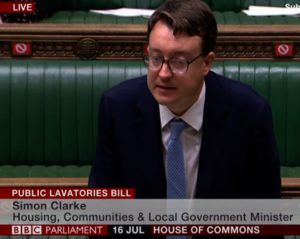
Minister Simon Clarke MP, from the Ministry of Housing, Communities and Local Government presents the Non-Domestic Rating (Public Lavatories) Bill 2019-2021 to the House of Commons today. The Bill received unanimous approval, for adoption, by the ministers present. When brought into legislation it will effectively remove the levy of (NDR) Rates from all “stand-alone” public toilets in England and Wales. The devolved administrations will be expected to adopt the new Act.
The Hansard Transcript of the proceedings can be read in full by following this LINK:
The BTA is delighted to annoounce the long awaited progress of the NDR Bill to remove the rates levy from all “stand-alone” public toilets. Our founder and current President Richard Chisnell took up this baton in 2012 and it has been an arduous journey through the years to get to this point. In 2015 the BTA board agreed to make this relief a priority and Roger Berry took the lead in speaking to likeminded organisations and political colleagues to try and move the proposal forward.
October 2018 the Chancellor of the Exchequer Mr Philip Hammond announced, during his budget speech, in Parliament that he was introducing the NDR Public Lavatories Bill and following the Bill passsing through the House of Lords and the House of Commons we’re almost there.
The Bill will now go forward immediately after the summer recess of Parliament and be laid before the House of Lords for their final approval before hopefully progressing to Royal Assent to become an Act of Parliament and enter into our Primary Legislation.
Local Authorities will be able to claim a FULL rates allowance relief on all Publicly Accessible Toilets under either their or even private control and use the monies saved to upgrade their services and provision of existing facilities. The minister thanked a number of organisations including the BTA, NALC and RSPH for their support and help in campaigning for this change in future legislation.

Thangam Debbonaire, the Shadow Secretary of State for Housing, lead those ministers present in congratulating Mr Clarke for presenting the Bill and the government for strongly supporting its immediate adoption – but suggested that there were still further enhancements called for. She agreed that this was a great first small but important step to retaining and restoring these essential buildings – but asked if government could look at the numbers of toilets lost over previous years and perhaps use some Covid emergency funding to redress the loss. Many public buildings, such as libraries, museums ansd civic centres were excluded under this pending legislation and she again asked if consideration might be given to how these additional local amenieties could be included, at some future juncture.
The Minister also proposed that, due to the keen support from many ministers and colleagues, that a working group should be established to look at the wider range of issue around provision of Public Toilets for all citizens, especially those with severe medical, emotional and physical conditions who relied daily on finding urgent relief when moving away from home. Ministers highlighted the plight of all those persons working away from their bases, lorry, coach, bus and taxi drivers and alos those in emergency services and social care who rely on these essential facilities. The Minister kindly thanked the BTA for providing some information and guidance on the essential and vital role played by publicly accessible toilets throughout society and the nation.
With the increased demands being placed upon these vital provisions following the easement of lockdown it is now critical that we see immediate investment in upgrading and reopening these frontline services. As we try to rebuild our local economies and invite tourism back to our towns and villages were have to invest time, money and expertise in getting our publicly accessible toilets hygienically cleaned and safe for use.
Both Minsters praised the national Changing Places programme and the work that BTA have been committed to with Muscular Dystrophy UK and Pamis in Scotland; in creating the CP Map and identifying potential new sites. Substantial funding of £30million has already been agreed to expand the reach of this programme and to greatly increase the number of sites where these specialised rooms can be best utilised.
The British Toilet Association wishes to thank all those individuals, groups and organisations who have worked closely with ourselves and our member organisations over the years to help bring about this relief legislation to local authorities.
We offer our special thanks to everyone who continues to fight tirelessly for the national retention of publicly accessible toilets and the future upgrading of our “away-from-home” toilets and the increasing standards of hygiene and provision — for ALL USERS.
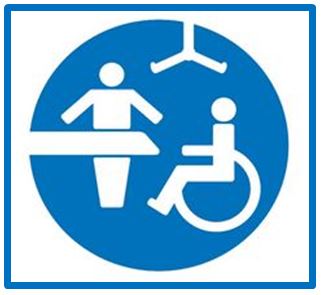
CHANGING PLACES CAMPAIGN
The BTA Director and the Board are fully committed to working with our colleagues in the Ministry of Housing, Communities & Local Government, Muscular Dystrophy and Pamis to support, maintain and expand the Changing Places Campaign, the CP Mapping System and the continued natonal drive for NEW facilities.
Coronavirus (Covid-19) BTA GUIDELINES

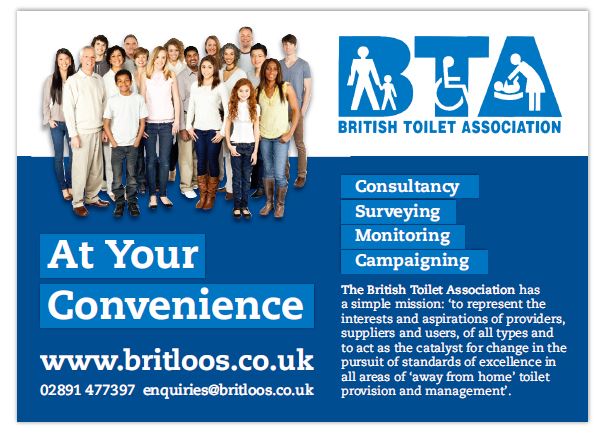
The BTA has been continuing to work throughout the pandemic to offer advice and guidance to all our members as well as providers and suppliers; on the importance of publicly accessible toilets. Each day we have been talking with experts around the world on cleaning and hygiene technologies and methodologies – WOW it;s been a steep learning curve !
This virus is posing a lot of questions on HOW do we kill it – WHAT do we use to kill it, HOW often do we apply product and/or WILL it return.
The government has offered little if NO guidance other than Hand washing and really hasn’t put any serious thought into the effects or long-term battle. From our research to date we are beginning to understand the quickest, safest and hopefully most effective methods to treat surfaces.
1. STEAM – high pressure steam cleaning will certainly kill the virus. So opening up a toilet block using this method offers the best results. It’s then a matter of how many times you can repeat this process.Some cleaning companies are using Hand-Held steaming devices to get into tight recesses
2. UV LIGHT – is very effective on all viruses (including Covid19) and can be applied using a hand-held wand. Care must be taken to apply the light for a period of several seconds on specific areas – as it takes a few moments for the UV to do its job. We have seen larger industrial units that circulate air through a UV prism which is very effective – but the cost of these is in excess of £3k.
3. One of our BCC colleagues helped to set up the Nightingale Hospital in Glasgow and her role was to train the cleaners. She went at length to maintain that good thorough cleaning with mild detergents or simple soap/fluid and hot water was just as effective. Again the importance of continued cleaning was the absolute key to maintaining a high level of hygiene.
4. BLEACH — I know it’s a forbidden substance in many councils – but it certainly kills Covid-19. We are aware that in these extremely threatening times that many cleaning operatives (fearing for their own safety as well as wanting to keep the public safe) may be resorting to using a mild/diluted solution to make sure that the surfaces are clear and free from this deadly intruder. We’re not condoning it – just putting it out there.
As you would expect, we are being bombarded with a range of products that companies would like us to endorse — but you will all understand that we cannot specify any particular brands or technologies until we have verified the bench tests & clinical trials — and in most cases that is probably many months away. So we are planning to feature some products ad processes that might give you ideas and concepts to persue yourselves.
We have repeatedly asked this government for the opportunity to lead a team of specialists/experts in working to find clear and correct solutions for the vast array of issues regarding public toilets. Everything from:
Surfaces (a complete range of different types..wood,plastic,stainless steel, formica, paint etc..) and we need to understand how long the virus lives on each – if it is affected by heat/light/cold/rain.wind ??
Touch Points – handles rails, flushes, taps, dispensers, door bolts, partitions Airflow – warm air dryers, aircon systems, windows and ventsSoap – non touch dispensers – replacing with sanitizing liquid – charging
External Sanitizing stations – for members of the public who don’t need the loo or at remote locations
Entry & Exit points – how do people enter and leave the facility – how do we want them to? Clinch/Pinch points? Control and Security
We have raised the issue of emergency funding to get these units brought up to an acceptable standard – perhaps even upgraded – to date there has been absolutely NO response.
We have raised further concerns on the projected increase in tourism and “STAYCATIONS” this year particularly. If our citizens are too scared to travel abroad to other countries for fear of catching any 2nd wave — then it is fair to assume that many may choose to visit the beautiful hills, valleys and seaside resorts of this country and therefore significantly increased numbers will expect to find the toilets open, clean and fit-for-purpose,
As there is still no PRIMARY or STATUTORY LEGISLATION, and more fundamentally no direct FUNDING that compels Local Authorities to to provide Publicly Accessible Toilets then we will continue to see councils struggling to provide clean, hygienic facilities across the country.
The government has been repeatedly asked to make “Emergency Funding” available to get these units reopened and more importantly upgraded to an acceptable standard to hekp fight the current & future viral threats. But again they have failed to respond or focus on these vital facilities. Several letters have been sent to various politicians asking them to address this issue and to make available some revenue to help councils to fight this dangerour viral threat by bringing these essential services up to speed and ready to facilitate the public in the quest for increased hygiene & safety.
£8.2 billion has now been granted to help fight this pandemic and to get the country’s economy flowing again. Without the legislation or requirement for councils to provide decent clean public toilets – many will choose to spend these monies on their mandatory services and long term contracts and our essential facilities will fall further into decline – placing all of us at increased risk of not being ale to find relief or hand-washing facilities when we most need them. Those councils who understand and embrace the need for public toilets have already indicated a substantial rise in the cost of entry — prices will rise to perhaps 50p – £1.00. Many units will move to “card only” access to prevent further contamination from coins. Customers will have to accept that this revenue will surely be needed to sustain the expected levels of hygiene and maintenance in the coming months and years ahead. It might also help to eradicate the problems that many councils are having with homeless sleepers and anti-social activities (including drugs)
BTA continues to work with the British Cleaning Council (BCC) and the British Standards (BSI) to review policies and directives to cleaning operatives, suppliers and providers. Primarily we’re all remote working so contact time is limited and many elements are taking longer to get sign-off or final agreement. The BSI has produced a “Safe working during Covid-19 pandemic” guidance document for orgaisations – follow the LINK below
BSI Guidance on: Use of toilets
The organization should consider additional measures to facilitate the safe use of toilet facilities (including Changing Places toilets used by disabled people) by workers and other interested parties. Actions can include:
a) managing the use of toilet facilities to avoid crowding;
b) establishing more frequent and enhanced cleaning (including touch points such as toilet seats, locks, flushes, grab rails, hoists) and waste disposal;
c) limiting the number of cubicles and urinals available in a block of toilets, to promote physical distancing;
d) using signage to encourage users to close toilet lids before flushing, where lids are fitted;
e) ensuring a system is in place to allow queues for toilets to form outside of the facility rather than in the confined space;
f) requesting workers or visitors to use a single designated set of facilities within a workplace, taking into account users with special needs who cannot comply with this;
g) providing paper towels or electric hand dryers, and ensuring levels of paper towels are monitored and maintained and that there is frequent, safe disposal of waste;
h) using automatic rather than manual equipment (e.g. sensor operated taps, soap dispensers, flushes, foot-operated bins); and
i) increased monitoring and replenishment of supplies (e.g. soap, sanitizer, paper towels, toilet paper).
.
As always, I would be delighted to discuss and expand any of the points raised or still causing you any concern. You have my numbers – and I would welcome a call. Please stay SAFE and ALERT!
Coronavirus (Covid-19) England
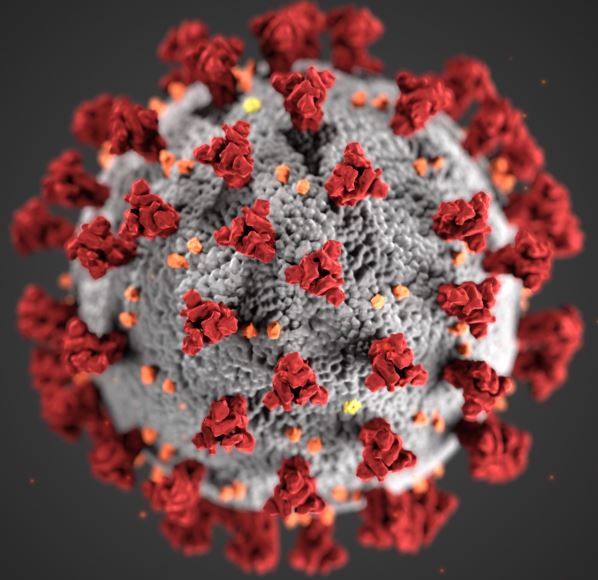
Since the arrival of this pandemic it has become extremely clear that each and everyone of us has to adhere to an increased level of personal hygiene. Regular hand washing and the repeated use of anti-bacterial wipes on the surfaces we come into contact with are essential precautions to avoid the spread of this deadly threat.
As the Lockdown eases and we venture back into society or return to our places of work we face the added strain of cross contamination and potential transmission of this virus to colleagues and friends. So we are looking for guidance from the devolved administrations to help us all act and behave in a responsible way to avoid touching contaminated surfaces or leaving traces behind that could be harmful to others.
Publicly Accessible Toilets are a vital piece of our everyday lives and these essential facilities help us to stay comfortable and relieved when we travel away from our homes or places of residence. The government has clearly advised us all to WASH your HANDS reguarly and thoroughly for a least 20 seconds after coming in contact with any area or surface that might host the virus. So PC’s are an absolutely vital piece of infrastructure in our fight against Covid19 and these units must be opened and maintained to the highest levels of hygiene and cleanliness to serve the rising needs.
Unfortunately, many public and retail units remain closed dur to the severe lack of CLEAR & CONCISE guidance from government and the fear of the providers and sppliers that they are effectively combating the viral threat.
NEW GUIDANCE RELEASED
In the last fe days we have received a set of guidance outlines from the English, Scottish and Welsh governments towards getting Public Toilets reopened and fit for public use. The LINKS below will take you directly to this advice and should allow you to make most of the daily routines and decisions around opening these essential facilities.
However, please remember that Covid19 only arrived some 3 5 months ago and much is still unknown about the DWELL times and EFFECTIVENESS of many substances and procedures in removing or killing this viral threat. We have offered our thoughts and understandings below – but you mmust be guided by the governments direct Coronavirus briefings and the special Scientific Advisors who are working tirelessly on your behalf to find the most effective controls and remedial work to attack and neutralise all aspects of this threat to our very existance.
Guidance on Opening Pubic Toilets
from Simon Clarke MP Minister for Regional Growth and Local Government
and Rebecca Pow MP Minister for the Environment
Public toilets, portable toilets and toilets inside premises should be kept open and carefully managed to reduce the risk of transmission of COVID-19. Steps that will usually be needed:
- Using signs and posters to build awareness of good handwashing technique, the need to increase handwashing frequency and to avoid touching your face, and to cough or sneeze into a tissue which is binned safely, or into your arm if a tissue is not available.
- Consider the use of social distancing marking in areas where queues normally form, and the adoption of a limited entry approach, with one in, one out (whilst avoiding the creation of additional bottlenecks).
- To enable good hand hygiene consider making hand sanitiser available on entry to toilets where safe and practical, and ensure suitable handwashing facilities including running water and liquid soap and suitable options for drying (either paper towels or hand driers) are available.
- Setting clear use and cleaning guidance for toilets, with increased frequency of cleaning in line with usage. Use normal cleaning products, paying attention to frequently hand touched surfaces, and consider use of disposable cloths or paper roll to clean all hard surfaces.
- Keep the facilities well ventilated, for example by fixing doors open where appropriate.
- Special care should be taken for cleaning of portable toilets and larger toilet blocks.
- Putting up a visible cleaning schedule can keep it up to date and visible.
- Providing more waste facilities and more frequent rubbish collection.
The above shows the complete lack of understanding of the myriad of issues surrounding the reopening of public toilets and the problems and fear that these providers are facing in allowing large numbers of persons into their premises to use these facilities. They give no guidance to cleaning regimes or materials, chemicals, processes or clinicaL RESEACH that would provide reasonable guidance and understanding that the correct procedures were being observed and carried out.
We suggest that you read and digest the more concise guidance that is being proffered by the Scottish and Welsh governments which goes into a more clear description of processes – but may still lack the clinical details that many are seeking. The BTA guidance that follows tries to give some additional information on cleaning methodlogy and processes and offers advice that suppliers and providers might use to seek professional help from outside professional sources – such as HSE or Dept of Health or Public Health.

Additional Guidance on deep-cleaning is given from our colleagues at the Health & Safety Executive (HSE) on the use of various mist, fogging and UV sysytems. All is contained within a further POST on this site or please follow the LINK directly to the HSE website,
Coronavirus (Covid-19) Wales
Since the arrival of this pandemic it has become extremely clear that each and everyone of us has to adhere to an increased level of personal hygiene. Regular hand washing and the repeated use of anti-bacterial wipes on the surfaces we come into contact with are essential precautions to avoid the spread of this deadly threat.
As the Lockdown eases and we venture back into society or return to our places of work we face the added strain of cross contamination and potential transmission of this virus to colleagues and friends. So we are looking for guidance from the devolved administrations to help us all act and behave in a responsible way to avoid touching contaminated surfaces or leaving traces behind that could be harmful to others.
Publicly Accessible Toilets are a vital piece of our everyday lives and these essential facilities help us to stay comfortable and relieved when we travel away from our homes or places of residence. The government has clearly advised us all to WASH your HANDS reguarly and thoroughly for a least 20 seconds after coming in contact with any area or surface that might host the virus. So PC’s are an absolutely vital piece of infrastructure in our fight against Covid19 and these units must be opened and maintained to the highest levels of hygiene and cleanliness to serve the rising needs.
Unfortunately, many public and retail units remain closed dur to the severe lack of CLEAR & CONCISE guidance from government and the fear of the providers and sppliers that they are effectively combating the viral threat.
NEW GUIDANCE RELEASED
This guidance is primarily for owners and operators of toilets for public use in Wales
- Local Authorities, town councils and town/city centre managers/forums
- Town and Community Councils
- National Parks
- Third sector organisations
- Heritage and tourism sites
- Commercial or business premises where toilet access is provided to the public
- Hospitality sector (e.g. cafés, bars, restaurants)
Where sector specific guidance is also available it should be considered alongside this.
Purpose and scope of this guidance
The Health Protection (Coronavirus Restrictions) (Wales) Regulations 2020 (as amended) have been made for the purpose of preventing, protecting against, controlling or providing a public health response to the spread of Coronavirus and contamination in Wales. The Regulations currently require certain premises and businesses to close, whilst imposing restrictions on certain businesses or services (including ‘public toilets’) allowing them to remain open providing that those responsible take all reasonable measures to ensure that specific physical distancing requirements are maintained. Persons responsible for work carried out on certain premises are also under a duty to take all reasonable measures to ensure that a distance of 2 metres is maintained between persons on the premises. Those subject to a requirement to take all reasonable measures must have regard to guidance from the Welsh Ministers about taking those measures. These Regulations are regularly reviewed in accordance with Regulation 3.
This guidance focuses on the safer management of toilets for public use in the context of the Coronavirus pandemic and in compliance with the Coronavirus Restrictions Regulations. It is intended to help the owners and operators of toilets for public use to plan for the safer management of toilets as the restrictions in Wales are lifted and to plan for the re-opening of toilets where they have been closed.
This guidance provides a framework for identifying the issues associated with the use of toilets for public use in light of the need for social distancing and cleaning/disinfecting to minimise the transmission of the virus.
This guidance sets out additional principles that owners and operators of toilets for public use will need to consider. It does not replace any existing health, hygiene, risk assessment or other requirements for the normal safe management of toilets for public use.
Responsibility in Wales for opening / managing toilets for public use rests with the toilet owner or operator. For some assets, the local authority may be the owner but responsibility for the operation and maintenance rests with some town or community councils under a lease agreement as part of asset transfer agreements.
Under the Public Health (Wales) Act 2017, there is a duty placed on local authorities to have a local toilet strategy and statutory guidance has been provided. Under part 8 of the Public Health (Wales) Act 2017, local authorities may provide toilets in its area for public use.
This guidance does not alter those duties and powers, it merely provides advice and principles owners / operators may want to consider.This publication has been prepared by the Welsh Government, developed with advice from technical experts and from local authorities. This guidance applies in Wales only and does not impose any legal obligations.
Public health is devolved in Scotland, Wales and Northern Ireland. For advice in other parts of the UK please see guidance prepared by the Northern Ireland Executive, the Scottish Government and, for England, the UK Government (Ministry for Housing, Communities and Local Government). We expect this document will be updated over time – this version is up to date as of 2 July 2020. You can check for updates on the Welsh Government website.
If you have any feedback regarding the content of this document and inform future guidance, please email saferplaces@gov.wales. This guidance is part of a wider set of documents produced by the Welsh Government about safer public places and related issues. All Welsh Government guidance can be found on the Welsh Government website.
What this guidance contains
The guidance contains principles and steps owners and operators of toilets for public use should consider in planning the reopening (where toilets have been closed) and management of toilets as safely as possible. It does not replace the need for owners and operators to carry out their own risk assessments or follow normal toilet cleaning and management practices.
Existing Public Health Wales and Welsh Government guidance covers the principles of how to manage toilets from a health and hygiene perspective, including the re-opening of schools and other educational settings, managing Safer Public Places and workplace guidance. What this guidance does is bring together those health and hygiene principles in one place, and also consider the issues particular to toilets for public use around public access and communications. See Further information for links to the related guidance.
The importance of re-opening toilet facilities
Toilet accessibility is a key factor in easing restrictions and restoring confidence, once it is safe to do so. Many publically accessible toilets have closed in the response to the pandemic, which has helped encourage people to stay local. Toilet access is essential for many people including the elderly, those classed as disabled, those who are pregnant, those with young children, or those with medical conditions. Consideration should be given to the equality implications of those with particular health needs who need to use the toilet more often. Equality Impact Assessments should be reviewed as part of the planning for re-opening toilets. A lack of toilets can result in anti-social behaviour.
As the coronavirus restrictions are lifted the increasing number of local people and tourists is likely to place pressure on services including toilets for public use. Toilets are currently in the ‘high priority but high anxiety’ area for the public – half will not visit an attraction at all if toilets are closed. Assurance of safety measures are hugely important in building confidence in their use, and toilet information is key for pre-visit communication. Many people feel they cannot leave their homes for shopping or other day to day tasks if they do not know that a toilet is available.
The challenges of re-opening toilet facilities
Toilets are potentially a risk for transmission of the virus if not managed well. Toilets for public use vary hugely, from isolated rural facilities to small community facilities to large blocks in city centres. Some toilets for public use are located in hospitality / tourism and other public and commercial facilities etc. Toilets are usually relatively enclosed indoor spaces and are often unsupervised. The virus is unstable and does not transmit as easily in outdoor environments and is rapidly inactivated by heat and sunlight. Indoors the virus is likely to survive for longer.
Social distancing and hygiene
Current guidance issued by the Welsh Government focuses on the key messages to keep Wales safe by:
- always observing social distancing (also known as physical distancing) – stay 2 metres (3 steps) away from others (outside your immediate household), indoors and outdoors;
- wash your hands regularly;
- if you are meeting one other household, stay outdoors;
Read Welsh Government social distancing guidance.
Enhanced cleaning and disinfection practices should be followed.
Read public health guidance on cleaning and disinfection in non-healthcare settings.
In Wales there is no legal or mandatory requirement for people to wear face coverings in public.
Good practice steps to consider
Consideration should be given to the sections below taking into account local conditions, location, size, usage of toilet etc. Risk assessments should be undertaken by owners / operators before opening any toilet, and then kept under review. Risks assessments must include consideration of staff safety and any additional workforce impacts in managing and cleaning toilets. These points are over and above all normal toilet management requirements.
Hygiene – cleaning and handwashing
- Frequent enhanced cleaning and disinfection regime adhering to guidance particularly of points that are regularly touched. Frequency will be determined by owners / operators risk assessment based on likely volume of use.
- Frequent collection of paper towel and other waste.
- Minimising use of portable toilets (non mains sewage/proximity of waste/enclosed space) whilst acknowledging that at some sites it may temporarily be the only option (i.e. while other facilities remain closed).
- Using signs and messages to build awareness of good handwashing technique and other respiratory hygiene behaviours, e.g. around coughing and sneezing in public places.
- Best practice handwashing information and facilities should be provided
- Where possible, providing disposable hand towels as an alternative to hand dryers in handwashing facilities.
- Where appropriate, sufficient and accessible provision of automated hand sanitising dispensers.
- Regular checking of facilities and measures including recording of checks.
See Further information for guidance on cleaning and disinfection in non-healthcare settings.
Social distancing
- Clear signage should be provided on the requirement to maintain a 2m distance from others (outside of your immediate household).
- Measures to limit the number of users at any one time, perhaps a one in one out system, either self-regulated with clear signage, or overseen by an attendant.
- Removing access, for example to every other urinal or hand basin through use of tape or signage or other mechanism.
- Clear markings for distancing and queuing.
- Where possible doors to toilet blocks may be wedged open to maximise fresh air, to allow users to assess numbers inside, and to limit hand contact.
Communication
Toilet signage
Clear bilingual signage with simple messages should be used:
- Do not use toilets for public use if you have symptoms of COVID-19
(stay home, self-isolate, seek a test) - Use them, wash your hands and leave promptly.
- Avoid unnecessary touching of internal surfaces, fixtures and fittings.
- Keep a 2m distance from others outside your own household – observe social distancing and hand hygiene guidance at all times.
- Queue outside not inside the toilets.
- Where provided – use hand sanitiser before entering and after leaving.
- Guides to good handwashing and around coughing and sneezing in public places.
- Telephone number if any cleanliness or stock issues.
Information Campaigns
Consider publically available information / publicity on:
- Toilet opening and cleaning protocols so people can plan trips and to help restore confidence.
- Reinforcing the responsibility of members of the public to follow the rules on social distancing and hygiene.
Consideration of all user groups
- Equality Impact Assessments should be reviewed to ensure that the way rules are implemented do not have a disproportionate, negative impact on those who share protected characteristics. Particular consideration should be given to those who are visually impaired in terms of signage and communication.
- Consideration should be given to opening Changing Places toilets as a priority.
- Larger toilets or those in busier areas may require supervision, at least in the initial stages, to ensure public are adhering to social distancing and to restrict the number of people using the facility.
- In some locations toilets are looked after by volunteers many of whom will be in the at risk or extremely vulnerable (shielding) categories so alternatives may need to be found.
- Training of any personnel involved in delivering the measures will be key to ensure they understand and can communicate local guidance effectively and positively.
- Where a decision is made not to open a toilet for public use (particularly baby change facilities, toilets for the disabled or Changing Places) an Equality Impact Assessment should be undertaken to assess impacts on accessibility to all sectors of the community.
Queuing
- Defined areas and clear signage to indicate where pedestrians should stand when queuing using spray markings or temporary barriers.
- Management of multiple queues for different entrances through clear signage and the use of stewards as appropriate.
- “Do not join the queue, come back in xxx minutes” signs provided at popular destinations, when capacity reached.
- Alternative provision and / or seating for people who are unable to stand for long periods.
- Protection of queues through physical security measures / street furniture.
Coronavirus (Covid-19) Scottish Guidance
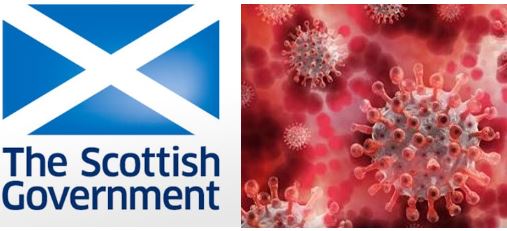
The opening of public toilets carries with it a risk of transmission of COVID-19 given the low levels of natural light, lack of ventilation, many surfaces to touch and the purpose of a toilet. Therefore, there is a need for careful consideration of how public toilets can be opened as safely as possible.
Safe opening will vary according to specific sectors and should align to the
guidance provided by those sectors in terms of restart. Assurance that adequate
sanitary facilities can be provided where appropriate is integral to the
restart process.
Public toilets are defined as any toilets accessible to the public. The opening of toilets should be accompanied by local risk assessment, and control measures should be proactively monitored by operators. Most premises should have a norovirus policy that can be adapted for use in cleaning facilities if an individual with COVID-19 symptoms is known to have used the facilities.
Risk assessment should specifically include:
- remote/unmonitored facilities for which there may be increased demand as travel restrictions are eased and people start travelling greater distances
- janitorial
staff for whom operators should already have procedures/PPE in place
Any
modifications or changes must take existing regulations into account.
Regulations on the provision of public toilets are governed by a number of
British Standards developed by the British Standards Institution (BSI). The key
standards which apply to the provision of public toilets are BS 6465 parts 1-4
and BS 8300 for accessible units
In opening toilets, operators should:
Prior to opening:
- conduct routine checks and take all measures appropriate to reopening after a prolonged closure e.g. consideration of requirements for legionella risk management due to stagnant water in plumbing systems
- adjustments must be made such as signage, taping off areas and floor markings to ensure physical distancing and facilitate good hand and other hygiene
- review all toilet and sanitary facilities (including disabled and baby change areas) to determine whether the fixtures and fittings are in good working order and replace or repair if not
- consider the need for additional waste management arrangements
Enhanced cleaning
It should not be assumed that hygiene measures in place pre-COVID-19 will be sufficient. Enhanced cleaning is likely to be required and should take into account:
- frequency – should be increased beyond what has been the case before COVID-19 and should be based on a risk assessment which includes both the usage of the facility and the fact that COVID-19 survives on the hard surfaces present in toilets for at least 72 hours
- products used – should be a disinfectant not detergent-based product
- areas of particular concern – it is important that attention is paid to frequently touched areas including toilet flush, toilet seat, toilet locks and handles, taps, paper towel and soap dispensers and door handles on access/entry
- enhanced monitoring of facilities will be required to ensure hygiene is maintained
- clearly display enhanced cleaning rota and ensure it is adhered to i.e. a documented record that the checks have been carried out for the public to see
- the cleaning rota should be supplemented with a cleaning schedule or similar procedure log that details the manner and frequency of cleaning of the various surfaces
- remove any unnecessary or communal items within the facility (e.g. ornaments or cosmetic items) to facilitate cleaning
- ensure that if a staff key fob or key is required to access the facilities this is cleaned between uses
- PPE should be provided in line with Health Protection Scotland Guidance for General (Non-Healthcare) Settings
- staff should be trained in appropriate cleaning methods for sanitary areas and the use of the equipment and products for cleaning and disinfection
- special care should be taken with the cleaning of portable toilets
Equipment
- reusable equipment should be removed and replaced with disposable (e.g. fabric towels, baby-changing mats)
- ensure that there are adequate hands-free waste disposal units
- cleaning materials for surfaces should be provided (e.g. antibacterial wipes for baby change areas)
Communication
- use signs and posters to: build awareness of good handwashing technique and reinforce the need to increase handwashing frequency, to avoid touching your face; and to cough or sneeze into a tissue, which is binned safely, or into your arm if a tissue is not available
- consider providing a contact number for the public to use should they have any concerns regarding cleanliness (e.g. if the facility has been heavily soiled between cleans). Use signage to tell the public what to do if someone falls ill with suspected COVID within a toilet facility
- COVID-19 can present with diarrhoea and or vomiting therefore it is important to have a mechanism to ensure the facility can be closed and adhoc cleaning can be arranged should the need arise
Hand hygiene
- provide liquid soap and ensure there is adequate stock at all times
- consider providing hand sanitiser dispensing units in portable toilets where handwashing can be less effective
- consider adjusting the time that push/sensor taps are on to encourage 20 seconds of hand washing
- provide hand-drying facilities – either paper towels with appropriate and frequent waste disposal or electric hand driers
- reduce the requirement for surfaces to be touched once hands have been washed on the way out of facilities e.g. prop open exit door
- consider providing hand sanitiser gel at the entry and exit from the facility. With adequate hand washing, the contamination of contact surfaces on leaving the facilities should be minimised. However, we know that many people do not wash their hands properly
Physical distancing
- operators should consider how to limit the number of people within facilities with multiple stalls/urinals e.g. with signage on the door instructing users to wait outside if they find that the facilities are occupied
- physical distancing should be maintained by way of signage and floor markings and, in respect of staffed toilets, proactively encouraged by staff
- consider whether additional measures such as physical barriers are required e.g. cubicles provide barriers but wash basins and urinals (trough urinals, in particular) will require greater consideration
- consider whether distances between equipment e.g. hand basins are sufficient and consistent with physical distancing policy
- consider the route to and from toilets, in particular how to maintain physical distancing and cleaning of possible touchpoints
- use one-way systems where this is possible
Sanitary facilities provision
- where toilets are being provided for a specific event, consider whether the standard guidance on toilet to person ratios needs to be revised to allow for physical distancing and enhanced cleaning routines
- note that more toilet facilities may be needed for the same number of people due to the physical distancing and hygiene measures
- note that there may be a greater number of people who need to use public toilets than usual as behaviours are influenced by current guidance (e.g. more people meeting in parks)
Following opening, there should be regular and proactive inspection of facilities to detect and address any issues promptly.



